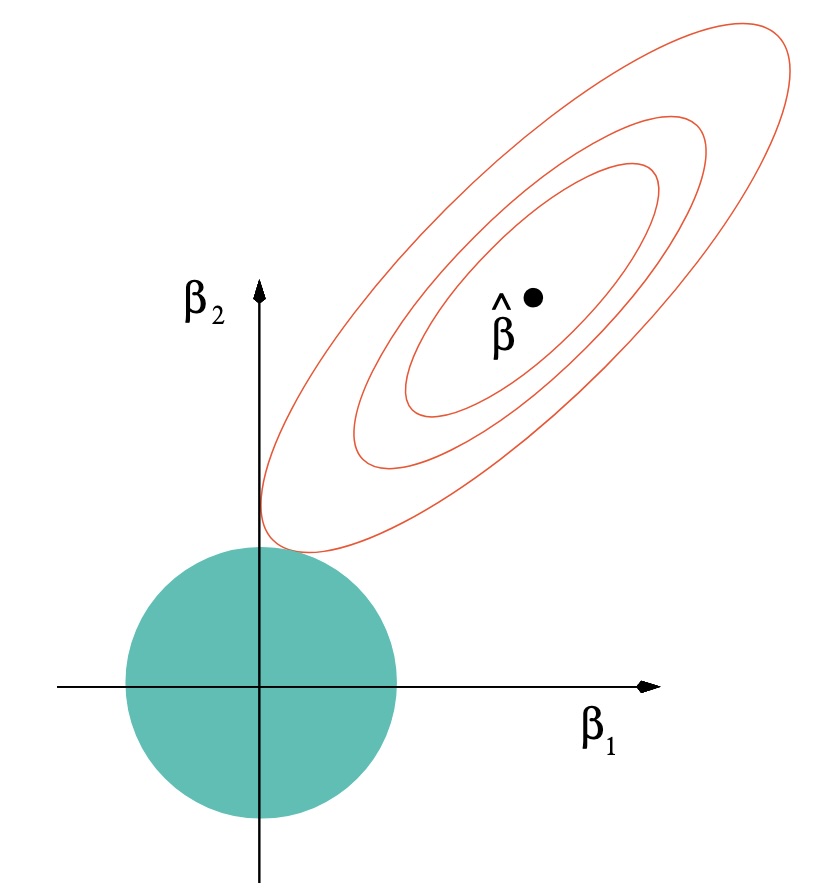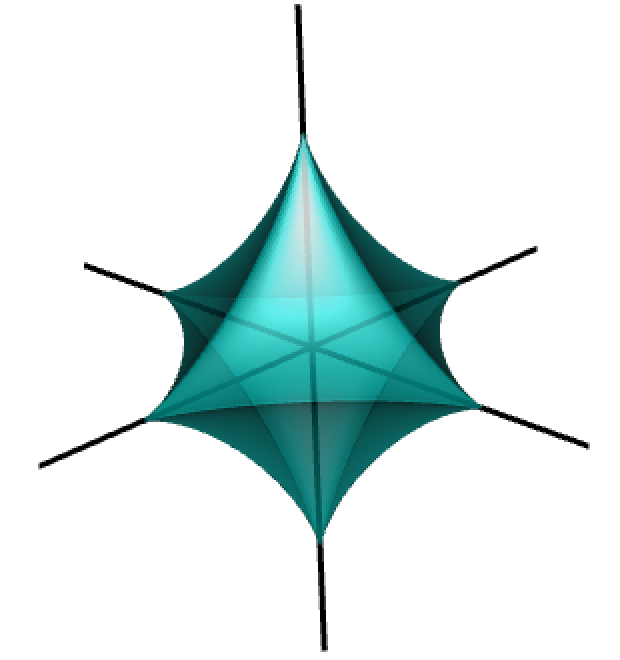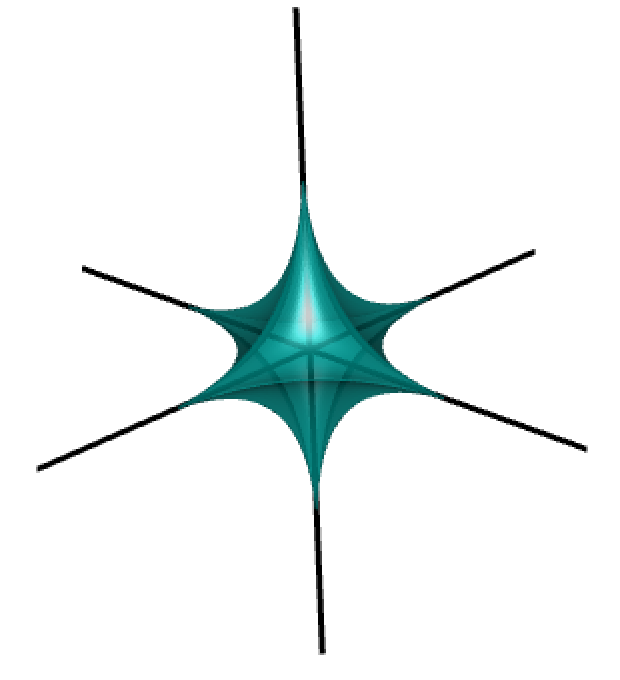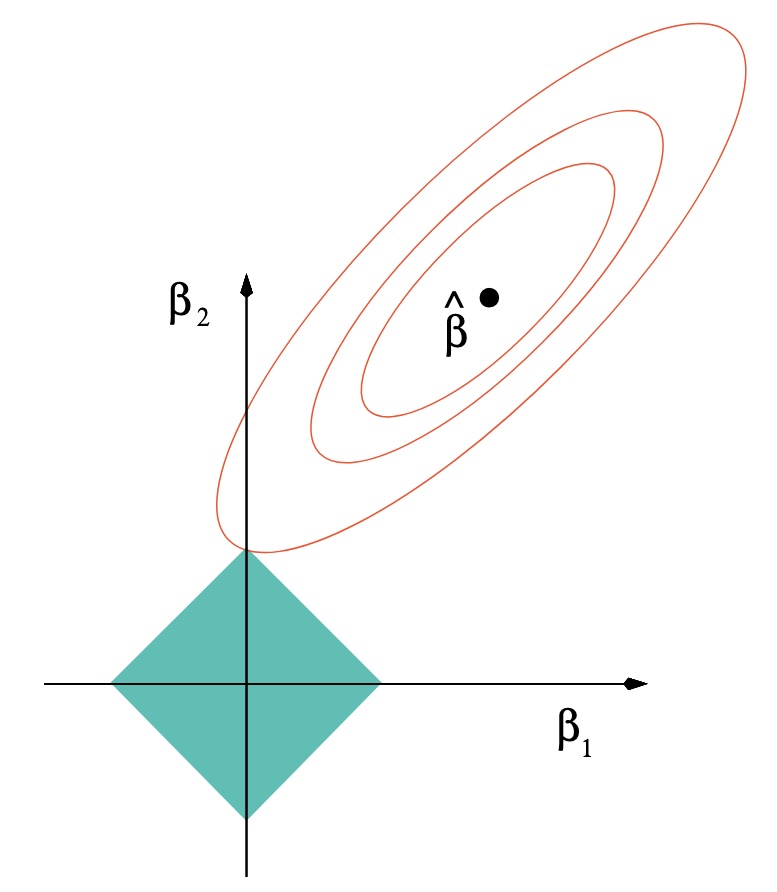On aspects of statistical modelling
Shrinkage methods
Professor of Statistics
Department of Statistics, University of Warwick
ioannis.kosmidis@warwick.ac.uk
ikosmidis.com ikosmidis ikosmidis_
11 April 2025
Housekeeping
Lectures
There will be 12 hours of lectures in this short course, as follows
| Day | Times |
|---|---|
| Wed | 12:00 - 15:00 |
| Thu | 10:00 - 13:00 |
| Fri | 12:00 - 15:00 |
| Sat | 09:00 - 12:00 |
Footnotes
Some slides have footnotes like1.
Footnotes have content that should not distract you as you skim through the slides but it is nevertheless important, including:
- Citations
- Commentary
- Exercises
Preliminary material and slide decks
The preliminary material for this short course is at
The slide decks for this short course are
Code-chunks
The R code reproducing the analyses and simulations presented on the slide deck is all embedded on the slides. Just click “[R Code]” wherever it appears.
For example,

From this point onward, when evaluating a code chunk, it is assumed that all previous chunks have been successfully evaluated.
R packages
The code on the slides rely on R version 4.4.2 (2024-10-31) and the packages
| package | version |
|---|---|
| dplyr | 1.1.4 |
| ggplot2 | 3.5.1 |
| ISLR2 | 1.3-2 |
| glmnet | 4.1-8 |
You can load them (and install them if you do not have them already) by doing
Why shrink?
Using all available covariates
Fitting a regression model on all available covariates may result in issues with both prediction accuracy and model interpretability.
e.g. For linear models and least squares
Prediction accuracy
| Setting | Least squares results in | Generalizability |
|---|---|---|
| \(n >> p\) | low bias and low variance | acceptable out-of sample prediction performance |
| \(n > p\) but \(n \sim p\) | high-variance and overfitting | poor out-of-sample performance |
| \(n < p\) | no unique estimators | infinite variance |
Interpretability
Including irrelevant variables complicates model interpretation.
It is unlikely to have least squares estimate that are exactly zero.
Singular value decomposition1
If \(X\) is an \(n \times p\) real matrix, then2 \[ X = U \Sigma V^T \]
- \(U\) is an \(n \times n\) orthogonal matrix (\(U^T = U^{-1}\))
- \(V\) is a \(p \times p\) orthogonal matrix
- \(\Sigma = \begin{bmatrix} \Sigma_1 \\ 0_{(n - p) \times p} \end{bmatrix}\), where \(\Sigma_1 = \text{diag}(\sigma_1, \dots, \sigma_p)\) with \(\sigma_1 \geq \dots \geq \sigma_p\)
- \(0_{s \times t}\) is a \(s \times t\) matrix of zeros
Sensitivity of least squares on \(X\)
The sum of squared errors can be written as \[ \|Y - X\beta\|_2^2 = \|U^T Y - U^T X V V^T \beta\|_2^2 = \|U^T Y - \Sigma \beta^*\|_2^2 \]
which expands to \[ \sum_{j = 1}^p (u_j^T Y - \sigma_j \beta_j^*)^2 + \sum_{j = p+1}^n(u_j^T Y)^2 \]
The least squares estimate can then be written as \[ \hat{\beta} = \sum_{j = 1}^p \frac{1}{\sigma_j} v_j u_j^T Y \] \(\hat\beta\) is sensitive to the magnitude of the singular values of \(X\); instabilities are to be expected when singular values are small.
Sensitivity of Least Squares on \(X\)
SVD of \(X\)
Collinearity

Prediction at a new point \((\tilde{x}_1, \tilde{x}_2)^\top\) is not unique unless it lies on \(L_x\)
Bias-variance tradeoff and prediction accuracy
Gauss-Markov theorem
The Gauss-Markov theorem1 implies that the least-squares estimator has the smallest mean squared error amongst all linear unbiased estimators
Prediction accuracy
Consider the prediction \(\tilde{Y} = \tilde{x}^\top\beta + \epsilon_0\) of a new response at covariate setting \(\tilde{x}\).
Under the Normal linear model the expected prediction error of a prediction \(\tilde{x}^\top\hat\beta\) is \[ \sigma^2 + \tilde{x}^\top\underbrace{\mathop{\mathrm{E}}\left\{(\hat\beta - \beta)^\top(\hat\beta - \beta)\right\}}_{\text{Mean squared error}} \tilde{x} \]
Can we trade some bias for a reduction in variance, and better mean squared error?
\(p > n\)
When \(p > n\), \(X\) does not have full column rank and the least squares problem does not have a unique solution.
Best subsets and stepwise regression
Computational Efficiency
Best subset selection is combinatorially expensive for general models.
Stability
Stepwise regression and best subset selection may suffer from high variance, leading to unstable model selection.
Collinearity
Stepwise methods can behave unpredictably in the face of collinearity.
Overfitting
Stepwise methods rely on local data-dependent decisions after seeing a sequence of models, which can lead to overfitting.
\(\ell_q\) balls \(\{\beta \in \Re^3 \mid |\beta_1|^q + |\beta_2|^q + |\beta_3|^q \le m\}\)



Ridge regression
Ridge regression and linear models
For \(\lambda > 0\), the ridge estimator of \(\beta\) is \[ \begin{aligned} \hat\beta_\lambda & = \arg \min_{\beta} \|Y - X\beta \|^2_2 + \underbrace{\lambda \|\beta \|^2_2}_{\text{ridge penalty}} \\ \notag & = (X^\top X + \lambda {I}_p)^{-1} X^\top Y \end{aligned} \tag{1}\] where \({I}_p\) is the \(p \times p\) identity matrix1 2
(1) is a convex optimisation problem (the objective is the sum of two convex functions of \(\beta\)) and has always a unique solution.
Ridge regression adds a multiple of a full-rank matrix (!) to \(X^\top X\), which stabilizes inversion when the columns of \(X\) are (nearly) dependent.
\(X\) matrix
Typically, we take \(X\) having no intercept column, and consisting of centered explanatory variables (\(x_{ij} = x_{ij}^{(o)} - \sum_{i = 1}^n{x_{ij}^{(o)}}/n\)). Ridge estimation can happen in two steps1
Compute \(\hat\beta_\lambda\) as in (1)
Estimate the intercept as \(\hat\beta_0 = \bar{y} - \sum_{j = 1}^p \bar{v}_j \hat{\beta}_{\lambda,j}\), where \(v_j\) here is the \(j\)th column of \(X\).
Ridge regression is not invariant to scaling of the explanatory variables so we generally ensure that \(X\) has standardised columns.
Shrinkage
Directly from (1), the ridge estimates will converge to zero as \(\lambda \to \infty\) regardless of the data

In terms of the SVD of \(X\) \[ \begin{aligned} \hat\beta_\lambda = \sum_{j = 1}^p \frac{\sigma_j}{\sigma_j^2 + \lambda} v_j u_j^T Y \end{aligned} \]
e.g. \(X\) with orthogonal columns (\(X^\top X = {I}_p\)) \[ \begin{aligned} \hat\beta_\lambda & = (X^\top X + \lambda {I}_p)^{-1} X^\top Y \\ & = (1 + \lambda)^{-1} (X^\top X)^{-1} X^\top Y = (1 + \lambda)^{-1} \hat\beta \end{aligned} \]
The ridge estimator scales the least squares one by a factor and \(|\hat\beta_{\lambda_2}| < |\hat\beta_{\lambda_1}|\) for \(\lambda_1 < \lambda_2\) (element-wise “\(<\)” and “\(|.|\)” here).
Shrinkage
In terms of fitted values, using the SVD of \(X\)
Least squares
\[ X \hat\beta = \sum_{j = 1}^p u_j u_j^\top Y \] (well-defined even when \(n < p\))
Ridge regression
\[ X \hat\beta_\lambda = \sum_{j = 1}^p \frac{\sigma_j^2}{\sigma_j^2 + \lambda} u_j u_j^\top Y \]
Ridge shrinks more along the principal component directions \(u_j\) that correspond to low variance (small \(\sigma_j\)), and less along the directions \(u_j\) that correspond to high variance.
Variable selection (sort of)
Ridge regression shrinks coefficients towards zero, adaptively depending on the size of the singular values of \(X\). However, it does not set them exactly to zero.
Solution path
The set of all ridge regression estimates \(\{\hat\beta_\lambda: \lambda > 0\}\) is called the solution path.
e.g. using MASS::lm.ridge() for ISLR2::Credit, which uses an SVD of \(X\) to get the whole solution path (if you can compute it)
R code
library("MASS")
data("Credit", package = "ISLR2")
fm <- Balance ~ -1 + .
credit_mf <- model.frame(fm, data = Credit)
X <- model.matrix(fm, credit_mf)
X_scaled <- scale(X)
Y <- scale(model.response(credit_mf), scale = FALSE)
grid_size <- 10000
lambda_grid <- seq(15000, 0.05, length = grid_size)
ridge_fit <- lm.ridge(Y ~ -1 + X_scaled, lambda = lambda_grid)
## Using glmnet
## ridge_fit <- glmnet(X_scaled, Y, alpha = 0, lambda = lambda_grid)
## plot(ridge_fit, xvar = "lambda", label = TRUE, main = "Ridge solution path",
## ylab = "Standardized coefficients")
df_ridge <- data.frame(lambda = rep(lambda_grid, ncol(X)),
covariate = rep(colnames(X), each = grid_size),
estimate = c(coef(ridge_fit)),
method = "ridge")
ggplot(df_ridge) +
geom_line(aes(x = log(lambda), y = estimate, col = covariate)) +
theme_minimal() +
labs(x = expression(log(lambda)), y = "Standardized coeffficient")
Ridge regression retains all features but reduces their impact as \(\lambda\) increases.
Bias and variance
Expectation of \(\hat\beta_\lambda\)
\[ \mathop{\mathrm{E}}(\hat\beta_\lambda) = X^\top X(X^\top X + \lambda {I}_p)^{-1}\beta \]
The ridge estimator is biased even when \(\hat\beta\) is not.
Variance of \(\hat\beta_\lambda\)
\[ \mathop{\mathrm{var}}(\hat\beta_\lambda) = \sigma^2(X^\top X + \lambda {I}_p)^{-1}X^\top X (X^\top X + \lambda {I}_p)^{-1} \]
The variance of \(\hat\beta_\lambda\) goes to zero as \(\lambda \to \infty\).
Also, \(\mathop{\mathrm{var}}(\hat\beta_\lambda) - \mathop{\mathrm{var}}(\hat\beta)\) is a non-negative definite matrix. In that sense, the distribution of \(\hat\beta_\lambda\) under the linear model is more concentrated around its expectation than that of \(\hat\beta\).
Bias-variance tradeoff
There exists \(\lambda^* > 0\) such that \[ \mathop{\mathrm{E}}\left\{ (\hat\beta - \beta)(\hat\beta - \beta)^\top \right\} - \mathop{\mathrm{E}}\left\{ (\hat\beta_\lambda - \beta)(\hat\beta_\lambda - \beta)^\top \right\} \] is positive definite whenever \(0 < \lambda < \lambda^*\).1 2
Degrees of freedom and choice of \(\lambda\)
Degrees of freedom and generalized cross-validation criterion
We can write \(X\hat\beta_\lambda = H(\lambda)Y\). The effective degrees of freedom for ridge regression are then1 \[ \mathop{\mathrm{tr}}\left\{H(\lambda)\right\} = \sum_{i = 1}^p \frac{\sigma_i^2}{\sigma_i^2 + \lambda} \le p \] where \(\sigma_i\) is the \(i\)th singular value of \(X\). Then, the generalized cross-validation criterion is \[ \frac{1}{n} \sum_{i = 1}^n \left[ \frac{y_i - x_i^\top\hat\beta_\lambda}{1 - \mathop{\mathrm{tr}}{\left\{H(\lambda)\right\}/n}}\right]^2 \]
Choice of \(\lambda\)
Choose \(\lambda\) that minimises the generalised cross-validation criterion.2
Efficient ridge regression for \(p>>n\)
\[ \hat\beta_\lambda = (\underbrace{X^\top X + \lambda {I}_p}_{p \times p})^{-1} X^\top Y \]
If \(p >> n\) then inverting the \(p \times p\) matrix can be particularly demanding. Actually, in such cases the computational cost for \(\hat\beta_\lambda\) is \(O(p^3)\)
Efficient ridge regression for \(p>>n\)
It can be shown1 that \[ \hat\beta_\lambda = V_1 (\underbrace{\lambda {I}_n + R^\top R}_{n \times n})^{-1} R^\top Y \tag{2}\] where \(R\) (\(n \times n\)) and \(V_1\) (\(p \times n\)) such that \(X = R V_1^\top\) with \(V_1^\top V_1 = I_n\) (SVD tells us that we can always write \(X\) this way).2
This re-expression reduces the computational cost to \(O(n p^2)\) which is considerably faster than \(O(p^3)\) for \(p >> n\).
\(\ell_q\) balls \(\{\beta \in \Re^3 \mid |\beta_1|^q + |\beta_2|^q + |\beta_3|^q \le m\}\)






Best subsets
Best subsets and linear models
For \(\lambda > 0\), the lagrangian version of best subsets is \[ \begin{aligned} \beta_\lambda^\dagger & = \arg \min_{\beta} \|Y - X\beta \|^2_2 + \underbrace{\lambda \|\beta \|_0}_{\text{$\ell_0$ penalty}} \end{aligned} \tag{3}\]
This is a non-convex problem.
Oracle least squares in sparse linear models
Suppose that \(Y = X \beta^* + \epsilon\) with \(\epsilon \sim N(0, \sigma^2 I_n)\) and let \(S = \{j \in \mathcal{I} \mid \beta_{j}^* \ne 0 \}\) be the true active set.
Then, the oracle least squares estimator \(\hat\beta^{(oracle)}\) has its elements zero, except those indexed in \(S\), which are set to \((X_{[S]}^\top X_{[S]})^{-1} X_{[S]}^\top Y\).
It can be shown that, for fixed \(X\), the prediction risk of the oracle least squares estimator is \[ \frac{1}{n} \mathop{\mathrm{E}}\|X(\hat\beta^{(oracle)} - \beta_0) \|_2^2 = \sigma^2 \frac{|S|}{n} \]
Best subsets in sparse linear models
For fixed \(X\), and \(\lambda \asymp \sigma^2\log d\), the best subset selection estimator satisfies \[ \frac{\mathop{\mathrm{E}}\|X(\beta^\dagger - \beta^*)\|_2^2 / n}{\sigma^2 |S| / n} \leq 4\log p + 2 + o(1), \quad \text{as $n,p \to \infty$}. \] without any conditions on the predictor matrix \(X\). Moreover, \[ \inf_{\hat\beta} \, \sup_{X,\beta^*} \, \frac{\mathop{\mathrm{E}}\|X(\hat\beta- \beta^*)\|_2^2/n}{\sigma^2 |S|/n} \geq 2 \log p - o(\log p) \] where the infimum is over all estimators \(\hat\beta\), and the supremum is over all predictor matrices \(X\) and underlying coefficients \(\beta^*\) that have \(\ell_0\)-sparsity equal at most \(|S|\).1
Best subset selection is optimal in terms of rate as it achieves the optimal risk inflation over the risk of the oracle least squares estimator.
Lasso regression
Lasso regression and linear models
For \(\lambda > 0\), the Lasso (Least Absolute Selection and Shrinkage Operator) estimator of \(\beta\) is \[ \begin{aligned} \tilde\beta_\lambda & = \arg \min_{\beta} \frac{1}{2n}\|Y - X\beta \|^2_2 + \underbrace{\lambda \|\beta \|_1}_{\text{Lasso penalty}} \end{aligned} \tag{4}\]
(4) is a convex optimisation problem (the objective is the sum of two convex functions of \(\beta\)) but does not always have a unique solution1. What is always unique are the fitted values \(X \tilde{\beta}_\lambda\).
When the columns of \(X\) are in general position2, then the Lasso solutions are unique.
If the elements of the model matrix \(X\) are drawn from a continuous probability distribution, then with probability one the data are in general position.
Non-uniqueness of the Lasso solutions can occurs with discrete-valued data, such as those arising from dummy variables for categorical predictors.3
\(X\) matrix
Typically, we take \(X\) having no intercept column, and consisting of centered explanatory variables (\(x_{ij} = x_{ij}^{(o)} - \sum_{i = 1}^n{x_{ij}^{(o)}}/n\)). Lasso estimation can happen in two steps
Compute \(\tilde\beta_\lambda\) as in (4)
Estimate the intercept as \(\tilde\beta_0 = \bar{y} - \sum_{j = 1}^p \bar{v}_j \tilde{\beta}_{\lambda,j}\), where \(v_j\) here is the \(j\)th column of \(X\)
Like ridge, Lasso regression is not invariant to scaling of the explanatory variables so we generally ensure that \(X\) has standardised columns.
Shrinkage
e.g. using glmnet::glmnet() for ISLR2::Credit
R code
library("MASS")
data("Credit", package = "ISLR2")
fm <- Balance ~ -1 + .
credit_mf <- model.frame(fm, data = Credit)
X <- model.matrix(fm, credit_mf)
X_scaled <- scale(X)
Y <- scale(model.response(credit_mf), scale = FALSE)
grid_size <- 10000
lambda_grid <- seq(1000, 0.05, length = grid_size)
lasso_fit <- glmnet(X_scaled, Y, alpha = 1, lambda = lambda_grid, intercept = FALSE)
df_lasso <- data.frame(lambda = rep(lambda_grid, ncol(X)),
covariate = rep(colnames(X), each = grid_size),
estimate = c(t(as.matrix(coef(lasso_fit)[-1, ]))),
method = "lasso")
ggplot(rbind(df_lasso, df_ridge) |>
mutate(method = factor(method, levels = c("ridge", "lasso"), ordered = TRUE))) +
geom_line(aes(x = log(lambda), y = estimate, col = covariate)) +
theme_minimal() +
facet_grid(~ method) +
labs(x = expression(log(lambda)), y = "Standardized coeffficient")
For large enough \(\lambda\), Lasso will shrink all the coefficients to exactly zero.
Shrinkage


Computing the Lasso fit
Cyclic coordinate descent
One particularly elegant way to find the solution of (4) is via cyclic coordinate descent, where the update
\[ \tilde{\beta}_{\lambda, j} = \mathcal{S}_\lambda\left(\frac{1}{n} v_j^\top r^{(j)}\right) \tag{5}\]
is applied repeatedly in a cyclical manner until the coefficients do not change substantially.
In (5), \(S_\lambda(x) = {\rm sign}(x) \max\{|x| - \lambda, 0\}\) is the soft-thresholding operator, \(v_j\) is \(j\)th column of \(X\), \(r_{i}^{(j)} = y_i - \sum_{k \ne j} x_{ij} \tilde{\beta}_{\lambda, k}\) is the partial residual.
Pathwise coordinate descent
Typically, we compute the solution path using “warm starts”, i.e. we start with a large enough \(\lambda\) so that the only solution is the zero vector, decrease \(\lambda\) and run coordinate descent, decrease again using the previous solution as starting values, and so on.1
Degrees of freedom and choice of \(\lambda\)
Choosing predictors based on the response (e.g., forward stepwise selection) tends to use more than \(p\) degrees of freedom.
Lasso selects covariates like forward stepwise regression but also shrinks coefficients.
For fixed \(\lambda\) the shrinkage effect reduces degrees of freedom to exactly the number of non-zero parameters, counteracting the inflation caused by adaptive selection.1
Choice of \(\lambda\)
Choose \(\lambda\) that minimizes cross-validated MSE.2
Lasso in linear models: Prediction error
Suppose that \(Y = X \beta^* + \epsilon\) with \(\epsilon \sim N(0, \sigma^2 I_n)\) for some \(\beta^* \in \Re^p\).1
Slow rate
If \(\|\beta^*\|_1 \le R_1\) and \(\lambda = c \sigma \sqrt{\log p / n}\) for \(R_1, c > 0\), then there exists \(c_1 > 0\) such that with high probability, a solution to (4) satisfies \[ \frac{1}{n} \|X(\tilde\beta_\lambda - \beta^*)\|_2^2 \le c_1 \sigma R_1 \sqrt{\frac{\log p}{n}} \]
Fast rate
Let \(S = \{j \in \mathcal{I} \mid \beta_{j}^* \ne 0 \}\). If \(\|X \nu\|_2^2 / n \ge \gamma \|\nu\|_2^2\) for all nonzero \(\nu \in \Re^p\) with \(\|\nu_{[\mathcal{I} \setminus J]}\|_1 \le 3\|\nu_{[J]}\|_1\) for \(\gamma > 0\) and for all subsets \(J \subseteq \mathcal{I}\) with \(|J| = |S|\) (restricted eigenvalue condition), then for \(\lambda = c \sigma \sqrt{\log p / n}\) with \(c > 0\), there exists \(c_2 > 0\) such that with high probability, (4) satisfies \[ \frac{1}{n} \|X(\tilde\beta_\lambda - \beta^*)\|_2^2 \le c_2 \frac{\sigma^2}{\gamma} \frac{|S|\log p}{n} \]
Lasso in linear models: Variable selection consistency
Suppose that \(Y = X \beta^* + \epsilon\) with \(\epsilon \sim N(0, \sigma^2 I_n)\) for some \(\beta^* \in \Re^p\), and that \(S = \{j \in \mathcal{I} \mid \beta_{j}^* \ne 0 \}\) is the true active set.
Also assume that the following assumptions hold:
The smallest eigenvalue of \(X_{[S]}^\top X_{[S]} / n\) is bounded below by \(C > 0\)
There exists \(a \in [0,1]\) such that \(\max_{j \in \mathcal{I} \setminus S} \|(X_{[S]}^\top X_{[S]})^{-1} X_{[S]} v_j \|_1 \le 1 - \alpha\) (mutual incoherence / irrepresentability), where \(v_j\) is the \(j\)th column of \(X\)
\(\max_{j \in \mathcal{I}} \|v_j\|_2 / \sqrt{n} \le K\)
Lasso in linear models: Variable selection consistency
Then1, for \(\lambda \ge 8 K \sigma / \gamma \sqrt{ log p / n}\), with high probability
Uniqueness: The solution of (4) is unique
No false inclusion: \(S \subseteq \tilde{S} = \{\tilde\beta_j \ne 0 \mid j \in \mathcal{I}\}\)
\(\ell_\inf\) bound:
\[ \|\tilde\beta_{\lambda, [S]} - \beta_{[S]}^*\|_\infty \le \overbrace{\lambda \left[ \frac{4 \sigma}{\sqrt{C}} + \|(X_{[S]}^\top X_{[S]} / n)^{-1}\|_\infty \right]}^{B(\lambda, \sigma \,;\,X)} \]
- No false exclusion: The Lasso solution includes of \(j \in S\) such that \(|\beta_j^*| > B(\lambda, \sigma \,;\,X)\) and hence is variable selection consistent as long as \(\min_{j \in S} |\beta_j^*| > B(\lambda, \sigma \,;\,X)\)
Shrinkage methods
| Properties | Best subsets | Ridge | Lasso |
|---|---|---|---|
| Convex problem | ✔ | ✔ | |
| Closed form estimates of \(\beta\) | ✔ | ✔ | |
| Uniqueness of solution | ✔ | ||
| Collinearity handling | ✔ | ||
| Shrinkage | ✔ | ✔ | |
| \(p > n\) | ✔ | ✔ | ✔ |
| Variable selection | ✔ | ✔ |
Discussion
There are more theoretical results on the behaviour of Lasso and ridge regression in terms of estimation consistency, prediction quality, and variable selection consistency for a range of asymptotic regimes1.
The methods, algorithms, and theoretical analyses have also been extended for a wide range of modelling settings2, and there is a steady stream of application and corresponding theoretical results in novel settings.
There is also a wide range of penalties in an attempt to address the limitations of ridge and Lasso regression.
Elastic Net
Combination of an \(\ell_1\) (Lasso type) and an \(\ell_2\) (ridge type) penalty
Balances sparsity and collinearity
Useful when predictors are highly correlated
Zou, H., & Hastie, T. (2005). Regularization and variable selection via the elastic net. Journal of the Royal Statistical Society: Series B, 67(2), 301-320.
SCAD and MC+
SCAD (Smoothly Clipped Absolute Deviation) and MC+ (Minimax Concave Penalty):
Address bias in Lasso by using non-convex penalties
Preserve sparsity, and provide unbiased estimation for large coefficients
Fan, J., & Li, R. (2001). Variable selection via nonconcave penalized likelihood and its oracle properties. Journal of the American Statistical Association, 96(456), 1348-1360.
Zhang, C. H. (2010). Nearly unbiased variable selection under minimax concave penalty. The Annals of Statistics, 38(2), 894-942.
Adaptive Lasso
Uses a weighted \(\ell_1\) penalty, varying the strength of penalization across coeffficients
Improves variable selection consistency over Lasso
Reduces bias in coefficient estimation, recovering their consistency under assumptions
Zou, H. (2006). The adaptive Lasso and its oracle properties. Journal of the American Statistical Association, 101(476), 1418-1429.
Square Root Lasso
Penalizes the square root of the sum of squared errors
The tuning parameter that delivers near-oracle performance (a fast rate) does not depend on \(\sigma\)
Belloni, A., Chernozhukov, V., & Wang, L. (2011). Square-root Lasso: pivotal recovery of sparse signals via conic programming. Biometrika, 98(4), 791-806.
Group Lasso
Extends Lasso to grouped variables
Encourages selection of entire groups of related features
Useful when predictors have natural groupings (e.g., categorical variables with multiple levelsm additive regression models, etc.)
Yuan, M., & Lin, Y. (2007). Model selection and estimation in regression with grouped variables. Journal of the Royal Statistical Society: Series B, 68(1), 49-67.
Debiased and thresholded ridge
Takes advantage of the uniqueness of the closed-form solution in ridge regression
Thresholds a debiased ridge estimator to result in a variable selection and estimation methods with similar guarantees to the Lasso
Zhang, Y., & Politis, D. N. (2022). Ridge regression revisited: debiasing, thresholding, and bootstrap. The Annals of Statistics, 50(3), 1401-1422.
References
Ioannis Kosmidis - On aspects of statistical modelling